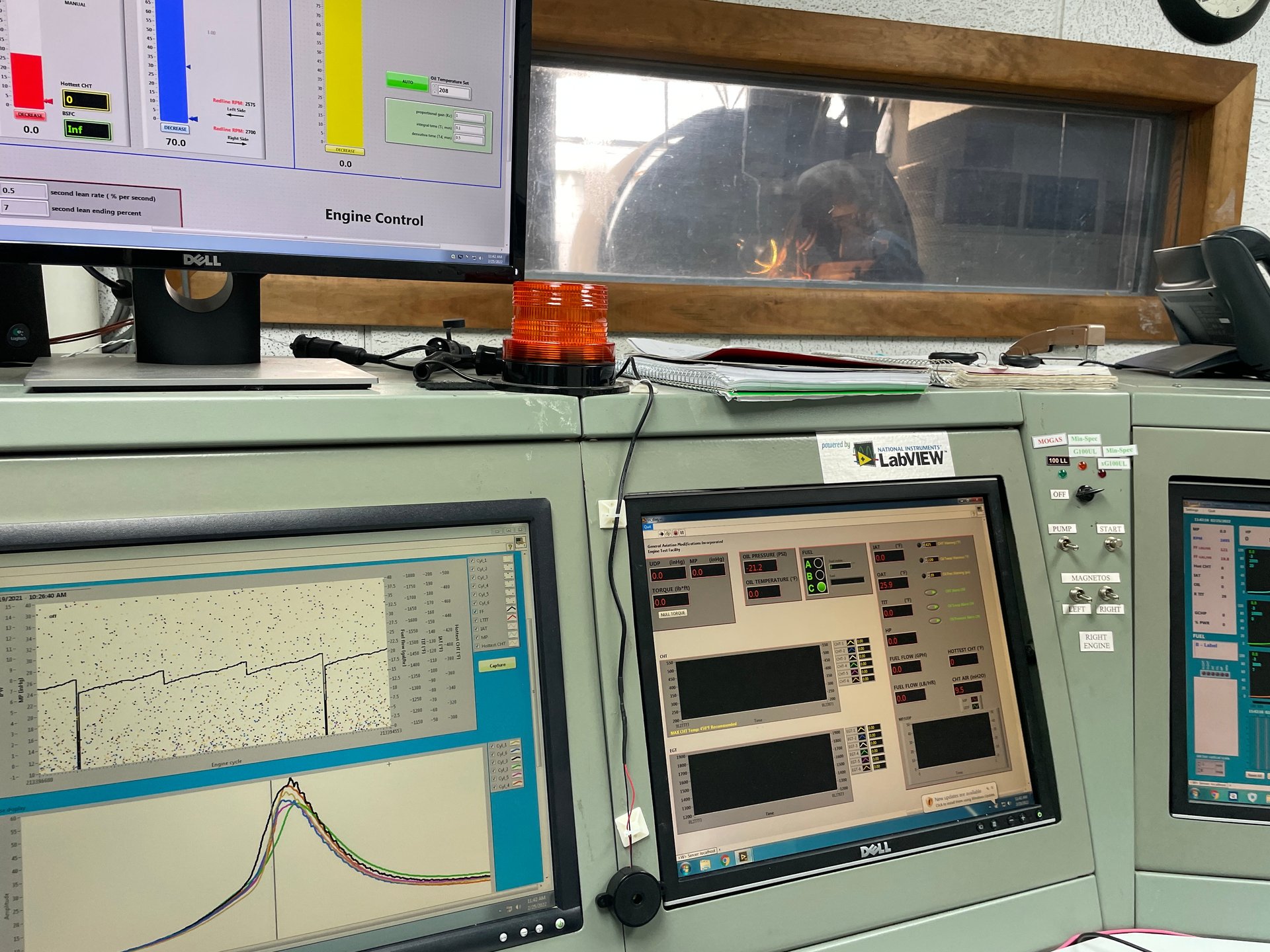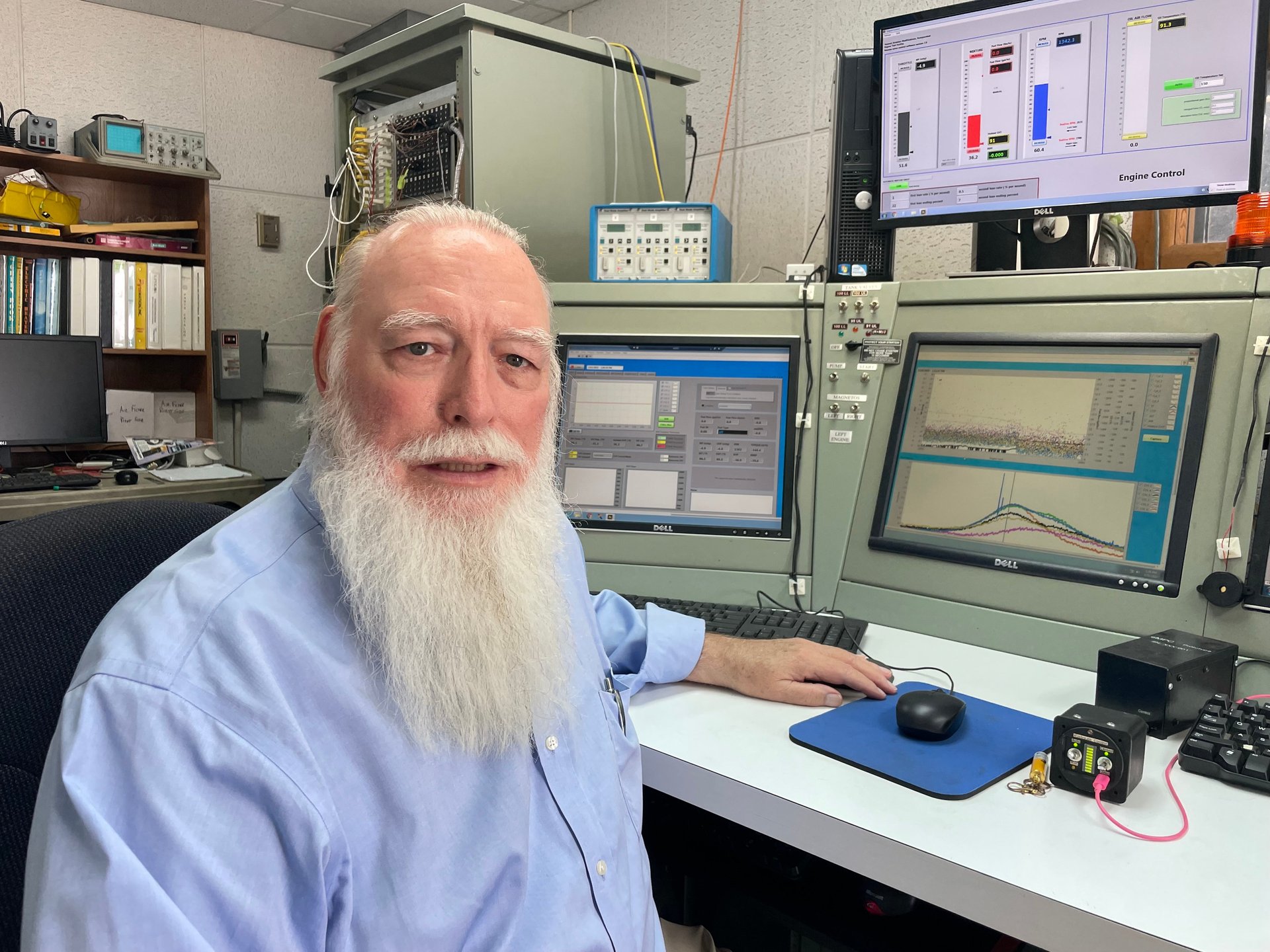Leaded airplane fuel is poisoning a new generation of American children
It’s a five-minute drive from Michelle Lopez’s home in San Jose, California, to Donald J. Meyer Elementary School, where she drops off her daughter each weekday morning. As seven-year-old Holland tumbles out of the car, the first flights of the day are taking off behind her.


It’s a five-minute drive from Michelle Lopez’s home in San Jose, California, to Donald J. Meyer Elementary School, where she drops off her daughter each weekday morning. As seven-year-old Holland tumbles out of the car, the first flights of the day are taking off behind her.
Reid-Hillview Airport, one of the country’s busiest civil aviation airports, is in the heart of Silicon Valley, and shares a fence line with Meyer Elementary. In the four years Holland has been attending school on campus, planes have taken off or landed more than 800,000 times on the nearby runway.
Almost all of them have burned leaded fuel.
Leaded gasoline was banned decades ago from America’s roadways. Yet some small airplanes still use the highly toxic substance. Children living near Reid-Hillview, as well as general aviation airports around the US, have seen the lead levels in their blood rise as a result.
Piston aircraft are now the largest source of airborne lead in the US, emitting 468 tons annually, according to the US Environmental Protection Agency (EPA).
The US Federal Aviation Administration (FAA) is aiming to find an unleaded avgas substitute by 2030. But it’s been on a quest (pdf) to develop a replacement fuel on and off for three decades, with little to show for it.
Children are especially vulnerable to the dangers of lead pollution, which damages their developing brains and nervous systems. In a 2021 study, lead levels in some children living near Reid-Hillview rivaled those of children in Flint, Michigan, where contaminated drinking water exposed roughly 9,000 kids to elevated lead levels for more than a year.
On average, the amount of lead per deciliter of blood in children living within a half-mile of Reid-Hillview was found (pdf) to be about 0.2 micrograms higher than normal, equivalent to about half the peak observed in Flint. Those living downwind of the airport absorbed even higher doses.

“We should know now how criminal it is”
Since the 1970s, thousands of studies have revealed two intertwined facts: Aviation fuel adds lead to children’s bodies, and trace amounts of lead inflict permanent damage on children’s developing brains.
“Aviation gasoline exposure is a daily, unabated barrage of lead,” says Sammy Zahran, an economist and public health researcher at Colorado State University, who conducted the study (pdf) at Reid-Hillview. “The observed increase here will have a detrimental effect on the cognitive performance of children living nearby.”
The amount of lead in Americans’ bloodstreams has fallen more than 96% since the US began phasing out leaded gasoline in cars almost 50 years ago. But the federal government has continued to allow the toxic additive in airplane fuel used by most of the nation’s 170,000 small, piston-engine aircraft, even though more than 3 million children like Holland and 16 million adults live within one kilometer of a general aviation airport in the US.
“We should know now how criminal it is to keep lead in gasoline of any kind,” says Howard Mielke, a research professor at the Tulane School of Medicine, who has studied lead for decades.
Reid-Hillview is not the largest lead emitter among general aviation airports in the US. On that count, it ranks 34th among the country’s roughly 13,000 airports, according to EPA data. But it stands on the frontline of an effort to get rid of the US’s last major source of lead air pollution. Santa Clara County, which operates Reid-Hillview, this year became the first in the nation to ban leaded aviation fuel, or avgas.
About a fifth of the planes at Reid-Hillview must now fly elsewhere to refuel; the rest have switched to unleaded fuel. That’s a microcosm of the bigger challenge: While most small aircraft could fly unleaded, the workhorses of the civil aviation fleet, which consume 70% of the gasoline and emit most of the lead, still need leaded avgas.
A solution is within reach, though. In January, engineers at the FAA certification office in Wichita, Kansas, certified a universal unleaded fuel now awaiting the sign-off of FAA officials in Washington. But in what appears to be an unprecedented move, the agency has halted final approval despite extensive safety testing and asked for more data and requirements—delays that could extend the approval process for years.
Why is it taking so long for the US to replace a toxic fuel dating from World War II? It’s a tale of bureaucratic obstruction, technical obstacles, and oil companies fighting to protect their profit margins. The delay has exposed millions more children to lead pollution.

The search for unleaded avgas
I’m in Ada, Oklahoma, to meet a man who claims to have created the world’s first universal unleaded fuel. It’s the day after a massive winter storm. As I pull my rental car off the highway, a sheet of ice seems to span the horizon across the red plains. The Ada Regional Airport is a collection of corrugated metal buildings and dun-colored hangars, now encrusted in ice from the storm. Inside are the offices of General Aviation Modifications Inc., or GAMI, founded by George Braly.
Everyone seems to have heard of Braly in the insular world of private aviation. Almost everyone has a strong opinion. “A crook,” one told me. Another, a pilot, predicted Braly would be the first to figure out unleaded fuel. “I think he’s the Thomas Edison of aviation,” said the pilot. “He’s outspoken and pisses a lot of people off, but he’s right.”
GAMI’s hangars are filled with dozens of workers, along with planes in various stages of disassembly, diagnostic wires sprouting from their engines. In one of the hangars, a massive, 310-horsepower Continental engine sits on a metal platform. Braly, an aerospace engineering graduate from Brown University, has built one of the country’s most sophisticated engine testing stands. Sensors inside each of the engine’s combustion chambers record the moment when spark plugs ignite the fuel. The data gets sent to a nearby control room displaying graphs of the explosion.

This equipment has enabled Braly to build finely tuned fuel injectors, boosting engine performance on tens of thousands of planes around the world. The work also has unlocked his next major project: making unleaded fuel any aircraft engine can burn.
A moment of detonation
Lead boosts octane levels, allowing the mixture of fuel and air to burn smoothly. Without it, pilots risk uneven combustion, known as “knocking.” If minimal, the mistimed firing is an annoyance. If severe, it can rip an engine apart. In the 1970s, automakers figured out how to modify their engines to run lead-free. But the aviation fleet hasn’t changed much in that time.
The average piston-engine aircraft in the US is around 50 years old; very few are retired each year. The most powerful aircraft, which burn the majority of avgas and emit the most lead, still need the higher octane that lead provides to fly safely.
Solving the lead problem in aircraft meant solving detonation, something Braly was uniquely positioned to do. But getting lead out of avgas turned out to be more than a technical challenge.
For refineries, avgas is a lucrative product. Although the oil industry sells only a small volume each year—less than a day’s worth of automobile gasoline—leaded fuel is far more profitable. Profit margins on avgas are around 80 cents per gallon, roughly 20 times that of conventional gasoline, says a former oil executive involved in its production. The avgas market is dominated by about eight US refineries and one (troubled) UK company producing the world’s supply of tetraethyl lead. “It’s a nice business,” says the former executive. “It’s not worth entering, but it’s not worth giving up.”
Braly, who grew up on a cattle ranch in Ada, speaks with an Oklahoma drawl and has a white beard that tumbles down to his chest. Before starting GAMI, he practiced as a defense lawyer—he and his wife still share a small practice in Ada, a short distance from the airport.
Braly’s search for an alternative to leaded fuel marks the second time he has gone toe to toe with an industry peddling a toxic product. In 1986, he filed one of the first cases implicating the tobacco industry in cancer deaths from its products. Braly lost the case, which involved a teenager who died from oral cancer after chewing tobacco, but warned the lawsuit was “the tip of a very large iceberg,” foreshadowing the billions of dollars the industry would eventually pay out in damages.

Decades later, he says, the pattern is the same. “Oil companies want to keep selling avgas as long as they can,” Braly says from his office in the Ada airport, which is filled with equipment manuals and discarded fuel injectors. “They’ve been doing everything they can to stall this [unleaded avgas], including inserting people on various government committees to create fear, uncertainty, and doubt.”
No safe level of lead
In the 1970s, almost everyone on the planet was getting a hefty dose of lead from gasoline. After leaving tailpipes, tiny airborne lead particles penetrated deep into the lungs and nasal passages before crossing into the brain and bloodstream, or settled on surfaces and were ingested by small children. Tissues and organs such as the liver, kidneys, lungs, brain, spleen, heart, and even bone soaked up the heavy metal.
Lead pollution had been rising for millennia. Modern humans carried levels of lead about thousands of times higher than their prehistoric ancestors by the 20th century. But humanity didn’t enter uncharted territory until the first gallon of gasoline was sold with tetraethyl lead in 1923. The additive was so toxic, even a splash on the skin could be lethal.
But it solved the engine-knocking problem. In 1925, the US surgeon general convened a committee to render a verdict about its safety. Amid heavy industry lobbying, the panel concluded that the absence of acute poisoning offered “no good grounds for prohibiting the use of [tetraethyl lead] gasoline” while admitting the possibility of “chronic degenerative disease of a less obvious character.”
By 1970, more than 200,000 tons of lead were pumped into the atmosphere annually, settling like a metallic mist over the surface of the Earth. That same year, just a few hours’ drive from Meyer Elementary and Reid-Hillview, a pioneering scientist named Clair Patterson at CalTech was raising the alarm about how pervasive lead was in the environment. Patterson, a geochemist, trekked to a site about 10,000 feet up in California’s Yosemite National Park to collect samples. All bore traces of lead pollution, much of it from car exhaust in San Francisco and Los Angeles. Under a microscope, scientists could see the lead-laden particles flecking the blades of grass, pine needles, and even animals’ fur. “The entire canyon in this remote area is heavily polluted by industrial lead,” Patterson declared.

The removal of lead from automobile gasoline began slowly in the US, starting in 1973. But it was the 1975 mandate for catalytic converters, a pollution control device damaged by lead, that made unleaded fuel standard within a few years. By 1995, children’s blood lead levels finally dropped below 3.5 micrograms per deciliter for the first time in decades, the threshold now designated as “elevated” by the US Centers for Disease Control. The EPA didn’t officially ban lead in gasoline for cars until 1996. (The last country in the world to use leaded fuel for cars, Algeria, depleted its supply in 2021.)
It was only as blood lead levels declined that scientists could start to see what a “safe” lead level might look like. They couldn’t find one. One veteran EPA official who spoke with Quartz on the condition of anonymity described the previous concentrations of lead in the air and in bloodstreams as “a horrifying disaster created on the American public” that has only become clear in the last two decades. “We’re seeing effects down to one microgram per deciliter,” the EPA official says.
The CDC was forced to lower its acceptable exposure level from 30 micrograms down to 25 micrograms in 1985, then to 10 micrograms in 1991, and 5 micrograms in 2012, when CDC officials admitted “no safe blood lead level has been identified.” In 2021, it set “elevated” lead levels at 3.5 micrograms per deciliter but acknowledges this level is not safe either. Rather, the agency says this amount “should be used as a guide” to determine whether medical or environmental action is needed, and to “prioritize communities with the most need for primary prevention of exposure.”
As of 2021, the CDC estimated that 2.5% of US children between one and five years old still have blood lead levels at or above 3.5 micrograms per deciliter.
What lead does to the human body
For all of the evidence of lead’s toxicity, the substance can still be found in plenty of sources beyond avgas. The largest contributor to childhood lead exposure—lead paint—remains in more than one-third of US homes (at least 40 states have granted waivers to insurance companies for liability in homes with lead). Lead pipes still supply water to as many as 10 million homes, although the recent US infrastructure bill will begin to tackle this problem. And off-road vehicles, racing cars, farm equipment, and marine engines can all, legally, burn leaded fuel sold at hundreds of easily searchable locations across the US.
The heavy metal, in other words, remains a daily hazard in millions of Americans’ lives. Around 500,000 children under age 6 in the US, and roughly 800 million children globally, still suffer from elevated blood lead levels, giving researchers an ongoing look at how lead harms the human body.
What makes the heavy metal so pernicious is how it mimics the minerals the body uses to build itself.
In almost every tissue, cells assemble cellular machinery and keep it running by recruiting crucial molecules such as calcium. Lead, when it enters the body, swaps itself in for these building blocks. As the body constructs itself with lead atoms, cellular mechanisms begin to go haywire. Cells repave themselves with the heavy metal. Proteins malfunction. Genetic instructions get garbled. Nerves’ electrical impulses, usually gliding along beds of calcium, are derailed by lead atoms.
As thousands and then millions of neural connections are severed, the mind flickers less brightly and the brain even shrinks, particularly regions controlling executive judgment, impulsivity, and mood regulation, according to brain imaging studies. The most acute exposure cause seizures, permanent brain damage, and comas.
But most of the damage is silent and incremental. Subtle changes in memory or mental processing may pass unnoticed at first, but the damage is undeniable. Since 1990, more than 6,000 studies on lead’s health effects have been produced, notes the EPA (pdf). All show that even “exposures to low levels of lead early in life have been linked to effects on IQ, learning, memory, and behavior,” damage that is permanent and untreatable given the brain’s limited ability to repair itself.
These deficits cascade into adult life. Blood lead levels as low as one microgram, equivalent to less than a thimble added to a large backyard swimming pool, double the odds of developing ADHD compared to children with no exposure, according to one 2006 study. “That’s the number that is currently keeping me up at night,” says Aaron Reuben, a PhD candidate in clinical psychology at Duke University who studies lead. “This is what we mean when we say there is no safe level of lead.”

Proving the link with aviation
After the EPA began the process of regulating airborne lead in the 1990s, the FAA screened more than 250 fuels that might serve as an alternative to leaded avgas. But removing lead from fuel formulas without sacrificing performance turned out to be more difficult than expected.
When regulation for aviation fuel failed to materialize at the EPA, the search for alternative fuels lost momentum. Over the next two decades, the FAA missed its own targets to phase out lead in avgas. Its latest goal is to replace leaded fuel by the end of 2030.
Officials in Santa Clara County, California, afraid lead might be poisoning their students, did not want to wait that long. More than 17,000 blood samples collected by local health departments during routine testing revealed children’s lead levels near the Reid-Hillview airport were elevated (pdf). But the testing was spotty, and it was hard to disentangle the influence of old housing, contaminated soil, and industrial lead sources. So in February 2020, the county, home to two small airports, commissioned its own study.
For that, officials called Zahran, the researcher at Colorado State University.
Few people know how lead moves through the air better than Zahran. He’s analyzed millions of data points to trace how a molecule of lead from, say, the engine of a Cessna 172 Skyhawk might get into the lungs of a student attending school a mile away.
Previous research had hinted at such a link. In 2011, Marie Lynn Miranda at Duke University uncovered a startling connection in North Carolina: Children’s lead levels crept up near small airports. But there wasn’t enough data to definitively rule out other factors. Six years later, Zahran turned to Michigan to analyze lead levels in 1 million children living around civil aviation airports. Not only did the levels of lead in children’s blood rise in proximity to airports, they tracked the monthly peaks and valleys of air traffic. It was as close a link to avgas and lead exposure as scientists had ever found.
That eventually led Zahran to Santa Clara County, where his results mirrored prior studies. Students living within half a mile from the airport showed the highest lead exposure, before declining for those living farther away. The data was precise enough that Zahran could see if students commuted toward the airport or away from it for school based on their blood lead levels.
The data prompted county officials to ban refueling with leaded fuel in January. “People should be as freaked out about Hillview airport as they are about Flint,” argues one Santa Clara County education official. “The Flint crisis lasted for nine months. Reid-Hillview has been there since the 1960s.”
Lead in gasoline gets a pass at the EPA
The regulation of leaded avgas has been held up by the EPA’s failure to formally designate the fuel as a hazard to health and the environment. In 2006, the nonprofit Friends of the Earth petitioned the agency for a so-called endangerment finding, citing extensive evidence of harms. But six years later, the EPA argued it still needed more time to study the problem. Meanwhile, members of Congress were pressuring the EPA to delay. Dozens of Republican lawmakers asked the agency in 2011 to wait until an alternative fuel was available before regulating leaded avgas.
As the controversy mounted, the FAA started another round of unleaded fuel testing through a program known as PAFI, short for the Piston Aviation Fuels Initiative. The top contenders were run through a gauntlet of trials starting in 2013, without success, followed by another round a few years later, according to a National Academy of Sciences report. Once Donald Trump took office at the White House in 2016, the EPA put avgas regulation on hold indefinitely, “a decision the administration made at that time,” according to the EPA official who spoke with us.
But the Biden administration put lead abatement back on the agenda in 2021, and leaded avgas was finally added after a formal petition by Santa Clara County and organizations represented by the nonprofit Earthjustice. The EPA official says everything is now in place for the agency to declare leaded avgas a danger to human health by the end of 2023, shortly before the end of Biden’s first term in the White House. “There are now three studies demonstrating that this lead from aircraft specifically is getting into children’s blood,” the official says. “That’s why [the Biden] administration has put us on a time clock and told us to announce it.”

The FAA is now launching its third round of fuel testing under a new program known as the Eliminate Aviation Gasoline Lead Emissions, or EAGLE, Initiative. The program, the FAA says, aims to “safely eliminate the use of leaded aviation fuel by the end of 2030 without adversely affecting the existing piston-engine fleet.”
There are two fuels in testing right now, one from Phillips 66 and another from the Dutch multinational chemical company LyondellBasell. They may be doomed from the start, fuel experts say. Both formulas swap out lead for a manganese compound called MMT. In many ways, MMT repeats the disadvantages of lead. In addition to fouling spark plugs and increasing maintenance costs by wearing down engines, it’s also another suspected neurotoxicant. MMT already has been banned in places like California since, as the EPA notes, “it is not possible…to conclude whether specific adverse health effects will be associated with manganese exposures.”
A greater problem may be the FAA’s process to find a new fuel. Companies submitting fuels to the EAGLE program aren’t able to refine their formulas based on new testing data, or risk starting the approval process all over again. “That’s not the way real-world research and development is done,” argues Braly. “Even Boeing doesn’t build an airliner to the same set of drawings that they originally submitted for certification, because they make changes as they go along.”
Oil and aircraft industries push back
Any new unleaded fuel will need to overcome more than bureaucracy. Industry players are defending their control over avgas and its replacement, according to interviews with pilots, aviation executives, and ex-oil company employees.
Braly’s troubles with the oil sector started in 2010, when his company submitted its fuel to an international standards group at the behest of the FAA. While the submission was ostensibly confidential, several oil companies attempted to appropriate the formula after it was disclosed to the group, based on patents filed in subsequent months. “There were patents filed by major oil companies, essentially with the formulation we disclosed,” says Tim Roehl, GAMI’s president. “It was apparent to us then that it was maybe not in our own best interest” to have followed the FAA’s advice.

GAMI also met opposition from engine and aircraft manufacturers. During one of Braly’s presentations in 2020, companies represented by the General Aviation Manufacturers Association (GAMA) questioned the fuel’s viability and quality before FAA officials, according to a former oil executive who attended the meeting. But when agency officials departed, their reasons for the opposition changed.
“It was a disinformation campaign,” says the former oil executive in attendance. “Once the FAA people left the room, [GAMA president] Pete Bunce says, ‘Look, you know, we threw up all these objections today, but that’s all a smokescreen.’” The trade association wanted a major oil company, rather than an independent supplier, to produce the fuel and share liability if any problems emerged. There were historical reasons for this: In the mid-1980s, a wave of lawsuits crippled the general aviation industry; liability and insurance costs soared, and aircraft production fell 95% over the next decade (pdf).
The result, however, has been more delays. GAMA “didn’t want to kill unleaded,” says the former oil company executive, who spoke with Quartz on the condition of anonymity. “But they wanted it to be [backed by] a big company, somebody to go to court with them.” The episode soured Braly on the FAA’s lead-alternative efforts; he’s now pursuing a separate path of FAA approval, known as a supplemental type certificate (STC), rather than submitting his fuel to the EAGLE program.
GAMA, which represents manufacturers including Lycoming Engines, Continental, Beechcraft, and Cessna, denies opposing unleaded fuel products like Braly’s. “As an industry, we want no lead,” says Walter Desrosier, a certification expert at GAMA. But Desrosier is pushing suppliers like Braly and Swift Fuels, which also is developing an unleaded candidate, to seek approval through the EAGLE program. “If there’s a viable fuel, you can bring it into the process and everybody will be on board if it passes all the tests,” Desrosier says. “The whole idea is to create a path to market and, with that, comes all the liability.”
Unleaded fuel on the plains of Oklahoma
Ice crunches beneath my feet as I walk toward a cluster of gleaming white fuel tanks at Ada Regional Airport. No signs betray the tanks’ contents. But GAMI’s latest patent reveals that each one contains a blend of pure gasoline, alkylbenzenes, and a mix of aromatic amines that fulfill the same function as lead. “We’re about to blend about 10,000 gallons of our fuel, the biggest batch we’ve made so far,” Roehl tells me as we walk around the tanks. “We’ll send a sample to a laboratory, and when it’s right, then we test it in the engines.”
This unleaded gasoline, theoretically, will replace every drop of avgas in the US civil aviation fleet if the FAA approves it. If approval is granted, GAMI says it will license the fuel to any firm that wants to make it; at least one major oil company has already signed up.
The specific approval GAMI is seeking, which would fall outside the bounds of the EAGLE program, is intended for modifications to FAA-approved aircraft or engine designs. In theory, the process is purely technical. If testing satisfies FAA engineers’ safety concerns, the agency is bound to grant approval for the supplemental type certificate. The FAA already has issued more than 75,000 of these certificates, for everything from enlarged cabin windows to GAMI’s own fuel injectors.
It’s through this process that Braly’s company hopes to win the first fleet-wide certification for unleaded avgas sometime this year. GAMI already has secured patents for the fuel. (Braly says everything in it has been used in automotive gasoline within the last 40 years.) Last year, GAMI took a big step by winning approval for another fuel compatible with about 70% of the country’s civil fleet—although crucially, not the workhorses that burn the greatest amounts of leaded fuel.
FAA officials say they are not opposed to the use of the supplemental type certificate process, which they call “safe but extremely slow and tedious.” But all fuels should go through the EAGLE program, says Earl Lawrence, the FAA’s executive director of aircraft certification.
EAGLE is “adding and bringing in the additional people and different perspectives that we need to have in order to actually field the replacement,” says Lawrence. “Theoretically, you could get a supplemental type certificate and list every make and model of aircraft ever built on there. But that doesn’t get you the approval of ExxonMobil, Phillips, and everybody else to produce it [and] send it through their systems. And that’s what EAGLE does.”
Braly has pursued the supplemental type certificate anyway. In March, the FAA’s certification office in Wichita, Kansas, removed the last technical hurdle blocking approval for Braly’s fuel in all of the approximately 1,800 engine and aircraft combinations in the US fleet now burning leaded fuel. That certification, according to a Jan. 5 FAA memo, “currently awaits FAA HQ approval to sign and issue.”

Once officials in Washington agree, it will be the culmination of almost two decades of research for GAMI. “It’s now ready for signature. We’re talking for all aircraft and all engines,” says Roehl. “The signature is only being withheld by headquarters, but once you’ve got it, then everything changes.”
The FAA has not said why final approval has not yet been issued, despite the submission passing all technical criteria. In an unusual move, the certification process for GAMI’s fuel has been audited and retroactively reviewed, raising issues potentially delaying approval for years.
An FAA spokesperson would not confirm whether the agency is actively evaluating GAMI’s fuel, or whether it was likely to approve it soon. Instead, the spokesperson suggested applicants like GAMI join the agency’s existing vetting process. “We want them to offer their fuels for [EAGLE] to evaluate,” he says.
Lead is unlikely to go quietly
When Santa Clara banned leaded fuel at Reid-Hillview and other airports on Jan. 1, 2022, the pushback was immediate.
The FAA opened an investigation and threatened to pull federal funding, ostensibly for violating terms of about $11 million in government grants (pdf). It sent a letter asking the county to delay the ban. “It appears the County is unilaterally moving forward with its plans to ban the sale and use of (leaded fuel) at the airports without the input, advance notice, or prior approval of the FAA,” the letter stated (pdf).
Pilots at Reid-Hillview, 20% of whom now must refuel their planes elsewhere, also objected. In a letter to the EPA (pdf), pilot and engineer Michael McDonald argued that the local lead study was fundamentally flawed. “The motive for Santa Clara County is to close an airport and thereby reap a quick financial windfall” by repurposing the land, he charged. “They have dressed up their financial motives with a pretext of health concerns for the marginalized.”

Local officials are not backing down from their ban on refueling with leaded avgas at Santa Clara County’s airports. After ending all sales of leaded fuel in January, a new fuel manufactured in Indiana by Swift Fuels, called UL94, was trucked in. After some initial resistance, the flight schools and operators at Reid-Hillview switched entirely to the new fuel, a lower-octane variety suitable for most piston engines. (Planes needing leaded avgas can refuel elsewhere and return to Reid-Hillview.)
Walter Gyger, the owner of Tradewinds Aviation, a flight school at Reid-Hillview, objects to how the county imposed the ban, but says a wider switch to unleaded fuel is now inevitable as pressure builds to close urban airports. “You’re going to have a much harder time defending this if your [opponents] tell people, ‘Oh, they are spraying lead over your kids’ heads,’” he says, expressing frustration at the pace of development for an unleaded alternative. “Pilots want unleaded fuel,” he says. “I don’t care about the process. I need the product.”
Santa Clara County’s top lawyer, James Williams, says the process at the federal level is backward: Start phasing out the leaded fuel, he says, and unleaded alternatives will follow. “That’s been the incredible success story of national environmental regulation,” says Williams. “We can’t put it off for another decade. No one can deny the public health impact. Getting lead out of the last transportation fuel is a given. The question is how to get there in the best and fastest way possible.”

“A leadership failure”
Ruth Etzel, a pediatrician and former director of the EPA’s Office of Children’s Health Protection, who filed a whistleblower complaint against the agency in 2018 for not taking more aggressive action on lead pollution, says the issue has devolved into a bureaucratic blame game.
“The EPA is pointing the finger at the FAA and saying that if more fuels were available, the EPA would make an endangerment finding, and [the] FAA is pointing the finger at [the] EPA and claiming that they need the endangerment finding to get more non-leaded aviation fuels,” Etzel writes via email. “Neither has the courage to take responsibility.”
As a result, she writes, “[a] whole generation of children has been born and grown up near small airports in the US while [the] EPA has been hitting the snooze button. This is a leadership failure at EPA—the EPA staff have been asking for an endangerment finding for years.”
Santa Clara County officials say Reid-Hillview is a model for other local governments that want to force the federal government to move faster, while building a robust market for unleaded avgas. “We’re making sure the lead study goes far and wide so other people can use it as a guide,” says county supervisor Cindy Chavez, who helped commission the research and pushed the county to vote to close Reid-Hillview once its federal obligations expire in 2031.
No refuge from lead
Like many of her classmates at Meyer Elementary, almost all of Holland’s days are spent a short distance from Reid-Hillview. Her family’s house sits just a mile from the airport. Her friends all live in the neighborhood. Her school is adjacent to the airport, and flights are audible overhead as she plays outside during recess and returns home in the afternoon.
Lopez doesn’t know what effect the exposure has had, or will have, on her daughter. She would like to reduce the risks. But she cannot clean the air on her own.
What you can do
Immediate action is most likely to come at the local level. Santa Clara County, which owns Reid Hillview and the nearby San Martin Airport, banned the sale of leaded gasoline at both airports this January. Not all general aviation airports are publicly owned. But other jurisdictions already have reached out to officials in Santa Clara County to use their ban on refueling with leaded avgas as a model.
At the national level, the EPA plans to declare avgas a health hazard by 2023, and the FAA expects to approve a lead-free replacement for avgas by 2030. Deadlines like this have been missed before. Congressional pressure spurred on by voters, as well as legal action by advocacy groups such Earthjustice, which are pursuing the issue in court, could help ensure the timelines are met. In March, six local and regional governments from California and Wisconsin joined Santa Clara County asking the EPA to ban leaded fuel nationwide.
Finally, share this series. Few people realize lead around small airports poses a risk, if they’re aware that the toxic metal is still used in fuel at all. But studies in North Carolina, Michigan, and California have all come to the same conclusion: The amount of lead in children’s blood increases with their proximity to small airports. “In the absence of federal action, I think families need to know that living within 13 blocks of a small airport will likely result in an elevation of their child’s blood lead level,” says Etzel, the former head of the EPA’s Office of Children’s Health Protection. “Just as a disclosure about lead paint in homes is required upon the sale of a home, we should consider a disclosure to families about living in homes and apartments near a small airport.”
If you’re worried about your child’s lead exposure, local health departments and doctors can provide a simple test covered by insurance or Medicaid. All two-year-olds should get lead tests during a regular doctor’s visit. While there is no safe level of lead exposure for children, families can take steps (pdf) to minimize their exposure to lead at home and at school.
If you want to know what’s happening at airports in your area, Quartz built a searchable library of maps showing the areas surrounding 95 of the top lead-emitting airports in the US.
Read more stories in this series:
This series was reported with grant support from:
